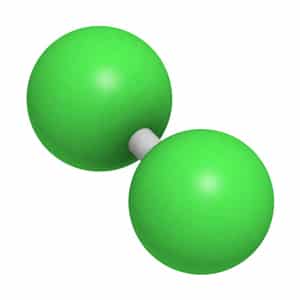
How It’s Used
Chlorine is well known as a household cleaner and disinfectant, and is also widely used as an oxidizing agent in water treatment and chemical processes. Chlorine is employed extensively in the bleaching process of wood pulp in pulp mills. Further industrial uses include its application in flame retardants, pigments, plasticizers, and silver chloride in photography. Infamously, it was used as a chemical warfare agent in World War I.
The significance of chlorine being used in water purification cannot be overemphasized. As such, this particular application of the chemical is considered by many authorities to be the greatest benefit that science has ever provided—and indeed may ever provide—to humanity.
Occupational Health/Toxicology
Exposure to chlorine can occur via inhalation, skin, or eye contact. Symptoms of exposure are manifold and include burning of eyes, nose, mouth; lacrimation, rhinorrhea; cough, choking, substernal pain; nausea, vomiting; headache, dizziness; syncope; pulmonary edema; pneumonitis; and hypoxemia.
Full record on chlorine from Hazardous Substances Data Bank (HSDB), a database provided by the US National Library of Medicine.
The chlorine entry from NIOSH’s Pocket Guide to Chemical Hazards.
Monitoring Instrumentation
Check out Interscan’s full line of chlorine gas detection/gas monitoring instrumentation.
